|
<< ben fry
the genetic code This diagram maps three-letter nucleotide sequences to the amino acid that they encode. For instance, the sequence of letters acg in a genome creates the amino acid threonine. Full explanation: A genome is made up of all the letters (i.e. acagagagattaa) that are read from a sequence of dna. The letters determine sequences that can become amino acids. Each set of three letters becomes one of twenty amino acids. This is known as the genetic code. For a more thorough description, see the glossary of genetic terms (includes a useful diagram of a chromosome) or the primer on molecular genetics. |
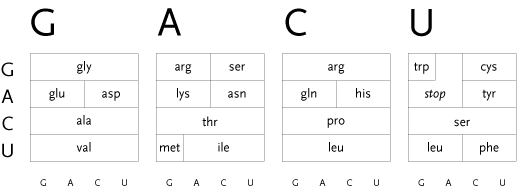
| In addition, by adding a small amount of color, the following version of the redesign also shows how hydrophilic (blue) amino acids are arranged in a group at the top of the table, while hydrophobic (white) can be found at the bottom: |
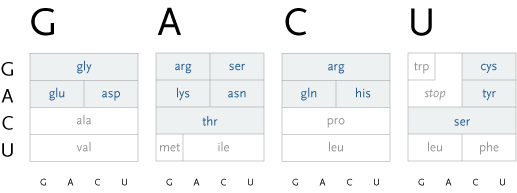
|
A third version includes more information such as the
letter codes and full names of the amino acids,
along with values for the polar requirement. It can be viewed
here.
The images above are a redesign of the diagrams typically found in most genetics and biology textbooks (examples below) that are often difficult to read, or fail to expose the interesting patterns and relationships in the three letter codes. For instance, the third letter often has less significance (known as a two or four-fold degenerate). By simplifying the diagram and removing unnecessary visual elements, it requires only half the space as any of the examples below: |
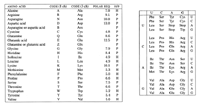
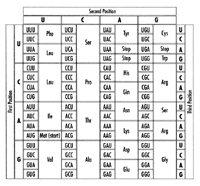
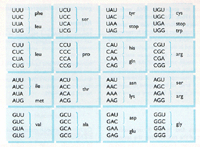
|
left: from "Computational Molecular Biology: An Introduction" by Clote
and Backofen; middle: "Developing Bioinformatics Computer Skills"
by Gibas and Jambeck; right: "Genomes" by Brown and Brown
<< ben fry Developed in Spring 2001, updated November 2003 Copyright 2001-03 Ben Fry, MIT Media Laboratory Please do not reproduce this work without consent |